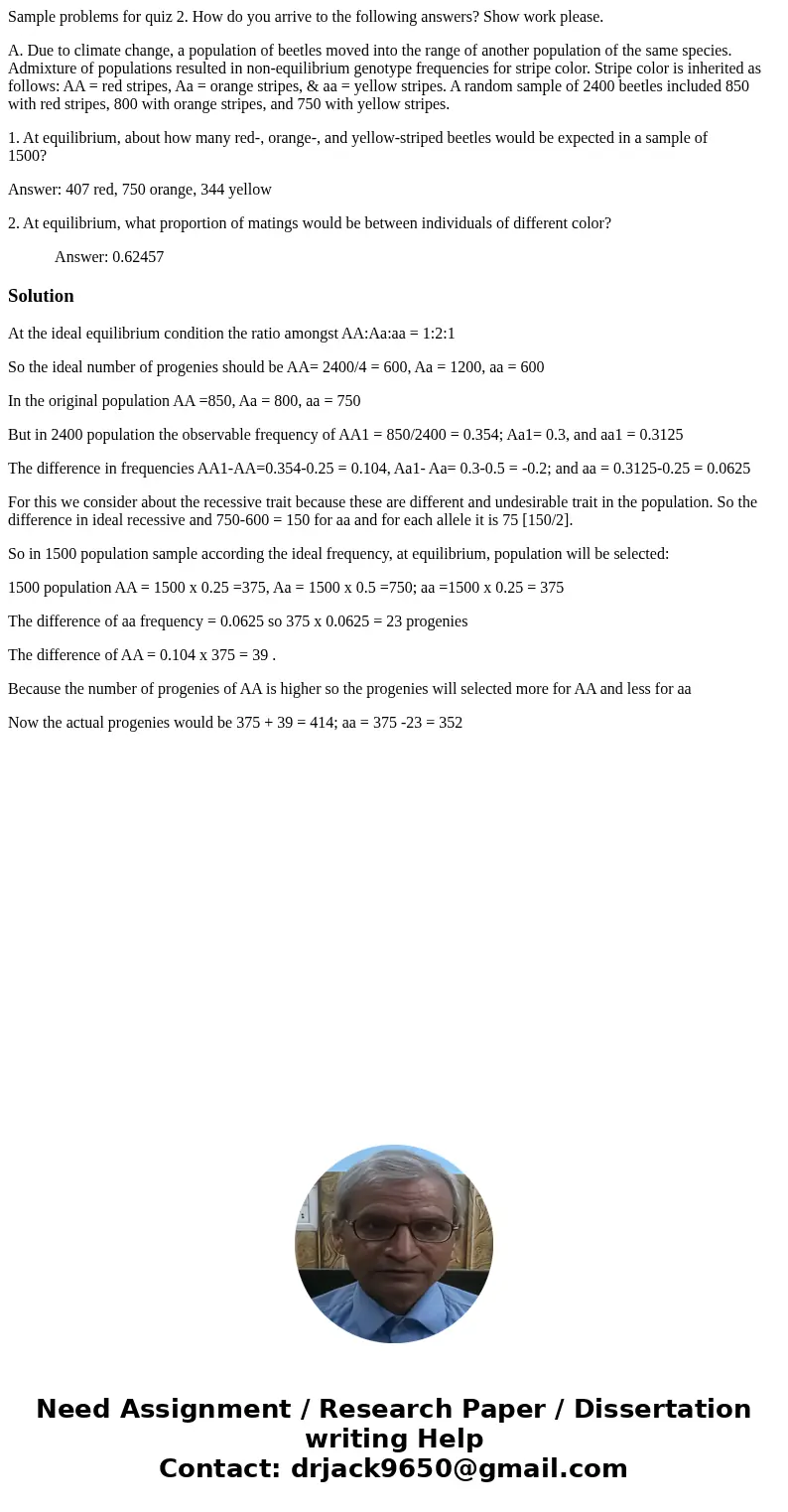Sample problems for quiz 2 How do you arrive to the followin
Sample problems for quiz 2. How do you arrive to the following answers? Show work please.
A. Due to climate change, a population of beetles moved into the range of another population of the same species. Admixture of populations resulted in non-equilibrium genotype frequencies for stripe color. Stripe color is inherited as follows: AA = red stripes, Aa = orange stripes, & aa = yellow stripes. A random sample of 2400 beetles included 850 with red stripes, 800 with orange stripes, and 750 with yellow stripes.
1. At equilibrium, about how many red-, orange-, and yellow-striped beetles would be expected in a sample of 1500?
Answer: 407 red, 750 orange, 344 yellow
2. At equilibrium, what proportion of matings would be between individuals of different color?
Answer: 0.62457
Solution
At the ideal equilibrium condition the ratio amongst AA:Aa:aa = 1:2:1
So the ideal number of progenies should be AA= 2400/4 = 600, Aa = 1200, aa = 600
In the original population AA =850, Aa = 800, aa = 750
But in 2400 population the observable frequency of AA1 = 850/2400 = 0.354; Aa1= 0.3, and aa1 = 0.3125
The difference in frequencies AA1-AA=0.354-0.25 = 0.104, Aa1- Aa= 0.3-0.5 = -0.2; and aa = 0.3125-0.25 = 0.0625
For this we consider about the recessive trait because these are different and undesirable trait in the population. So the difference in ideal recessive and 750-600 = 150 for aa and for each allele it is 75 [150/2].
So in 1500 population sample according the ideal frequency, at equilibrium, population will be selected:
1500 population AA = 1500 x 0.25 =375, Aa = 1500 x 0.5 =750; aa =1500 x 0.25 = 375
The difference of aa frequency = 0.0625 so 375 x 0.0625 = 23 progenies
The difference of AA = 0.104 x 375 = 39 .
Because the number of progenies of AA is higher so the progenies will selected more for AA and less for aa
Now the actual progenies would be 375 + 39 = 414; aa = 375 -23 = 352

 Homework Sourse
Homework Sourse